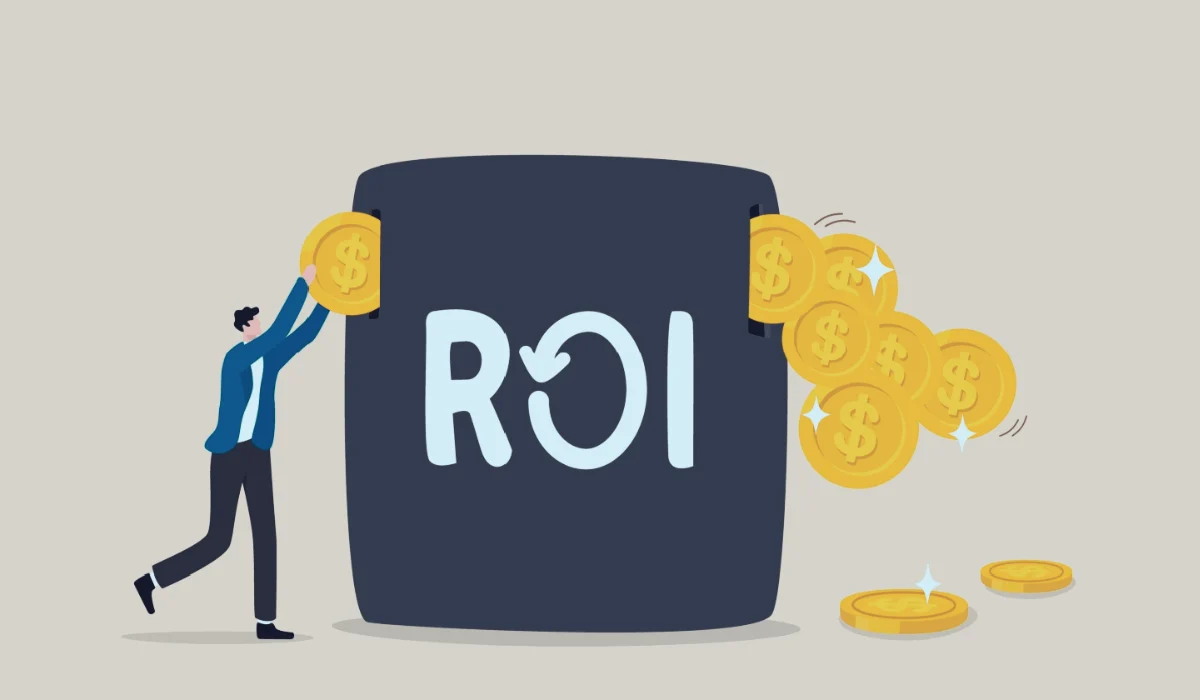In the ever-growing world of cryptocurrencies evaluating the performance of one’s investment is very important. There are many tools to assess the performance of investments.
One of the most important and easy ways is to calculate the Return on investment(ROI). It is a very simple way to calculate the quantum of appreciation of the investment.
It provides an investor with a metric to evaluate his investment and compare it with other investments.
As ROI does not consider the period of investment a better metric is the Annualised return on investments, which calculates the return on investment over 12 months/year. It is a better metric to compare investments as it takes into account the period of investment.
Other alternative methods of assessing crypto ROI, like Internal rate of return(IRR), comparative analysis, and risk-adjusted return are introduced in the article.
This article will be helpful for an amateur investor or a seasoned investor to make an informed investment decision.
What Is ROI?
ROI or Return on investment is a metric used in finance to evaluate the profitability of an investment.
ROI measures the loss or gain from an investment relative to the money invested. The common formula used is
Return on Invstement=[(Current value of Investment-Cost of investment) /Cost of investment] x100%
That is the ratio of the difference between the Current value of the investment and the cost of the investment and the cost of investment expressed in percentage.
The value in percentage can be compared across different investments to assess the profitability of the investment. A higher ROI indicates greater profitability of the investment.

Relevance of ROI in cryptocurrency
A cryptocurrency investor should regularly assess the performance of the investments compared to the wider markets including other cryptocurrencies, stocks, bonds, real estate, gold, etc to have a better judgment on the profitability of investments and to decide on future investment avenues.
An example is given for the calculator for ROI below.
Suppose an investment of $10,000 is sone in Bitcoin and its current value is $30,000.
ROI =[(30,000-10,000)/10,000]x 100%=300%, which is an extremely high rate of return, when compared to return on stock markets
Let us consider another scenario where the investment was $40,000 and the current value of the asset is $30,000.
Return on investment =[(30,000-40,000)/40,000]x100%= -25%, That is a loss of 25% on the investment
As cryptocurrencies are very volatile, the return on investment can either be negative or positive at the point of calculation.
Calculating ROI helps evaluate the performance of assets and provides an assessment of the profitability of crypto assets.
Comparing the ROI of different cryptocurrencies can assist in identifying the most profitable currencies and making informed decisions on how to proceed when purchasing crypto assets.
Along with this understanding, the ROI also helps in the portfolio optimization of assets. Based on the profitability of investments the amounts invested can be moved around and diversified in different cryptocurrencies which perform better.
A positive cash flow strategy is used by many traders to expand their portfolios by calculating ROI. The profitability calculator provides insights into the cash flow generated by the investments and thereby helps to make decisions on how much capital could potentially be used for new acquisitions.
Other Alternatives for Crypto ROI
Annualized ROI
The basic ROI calculation does not consider the period of investment. As most of the investment returns are calculated on an annualized basis, it is preferable to follow this metric to calculate profitability as it is easier to compare with other investments.
Internal Rate of Return(IRR)
IRR is a metric that takes into account the time value of money. IRR is used to evaluate how attractive a project or investment is.
If the IRR for a project is higher than the company’s required rate of return, the project is considered desirable.
The bottom line is that while Annujalised ROI gives the average return per year, IRR considers the time value of money and gives the rate of growth the project is expected to generate.
IRR cannot be used to compare different investments unless they have similar cash flow patterns.
Comparative Analysis
By comparing the performance of crypto assets to industry benchmarks valuable insights can be gleaned.
The performance of an investment can be compared with other crypto assets or stocks, funds, etc to deduce the performance of the investment. This is known as relative performance analysis.
Risk-adjusted return
In this metric one can integrate the risk associated with an investment in the profitability calculator.
Every crypto investment carries a different risk. Risk-adjusted metrics like the Sharpe ratio and Sortino ratio assess the risk-return trade-off of crypto assets that can help in selecting cryptocurrencies based on the risk appetite of the investor based on the investment philosophy.
Conclusion
For evaluating the profitability to optimize investments in the portfolio and diversifying investments calculation of the ROI of crypto assets is very important.
It is very simple to calculate the basic ROI based on the formulas, which can help investors assess the success of their investments in cryptocurrency and make informed decisions in the future based on data-driven insights.
On the other hand, there are limitations of ROI and to alleviate that metrics such as annualized ROI, IRR, and risk-adjusted returns should also be considered for the comprehensive evaluation of crypto assets.
